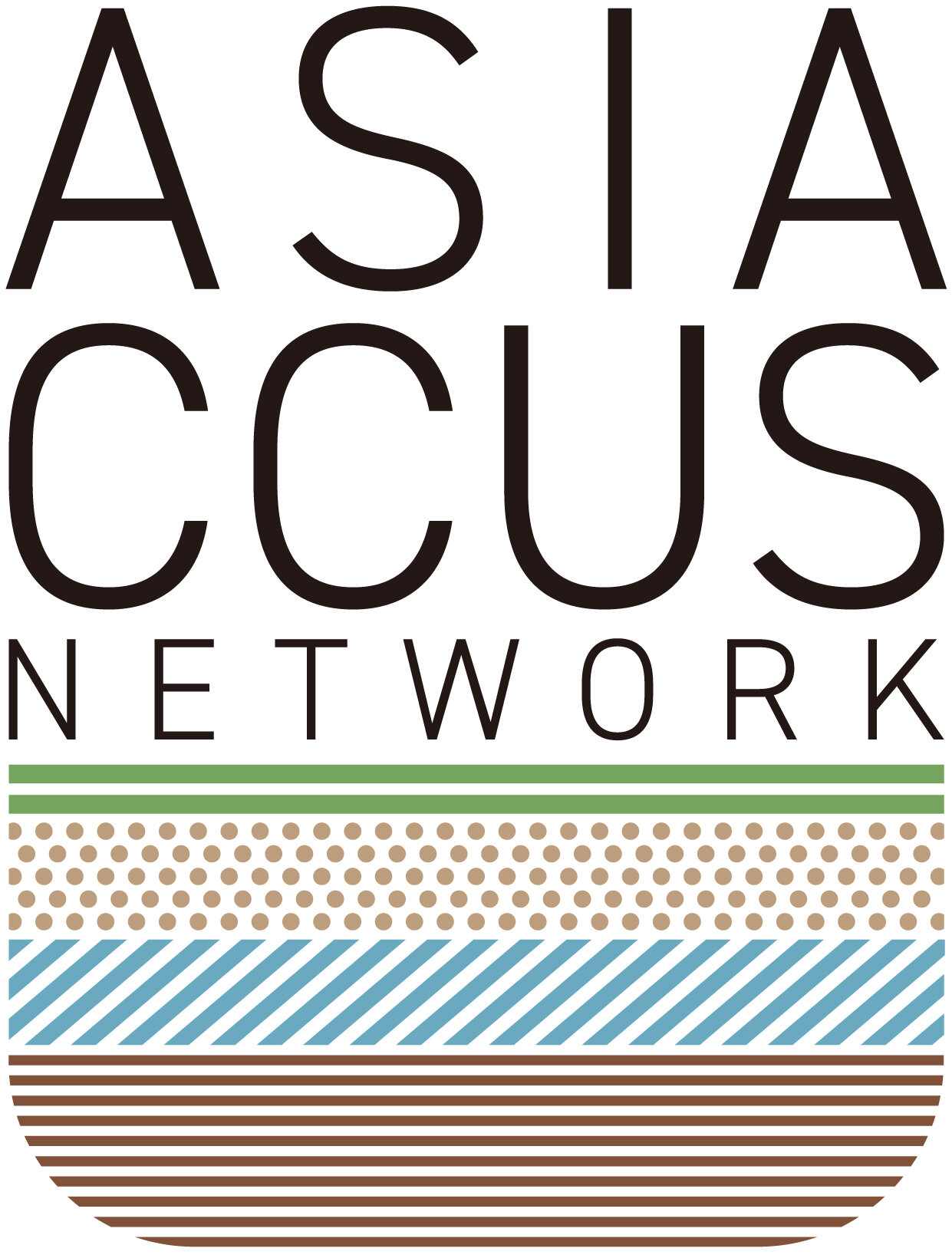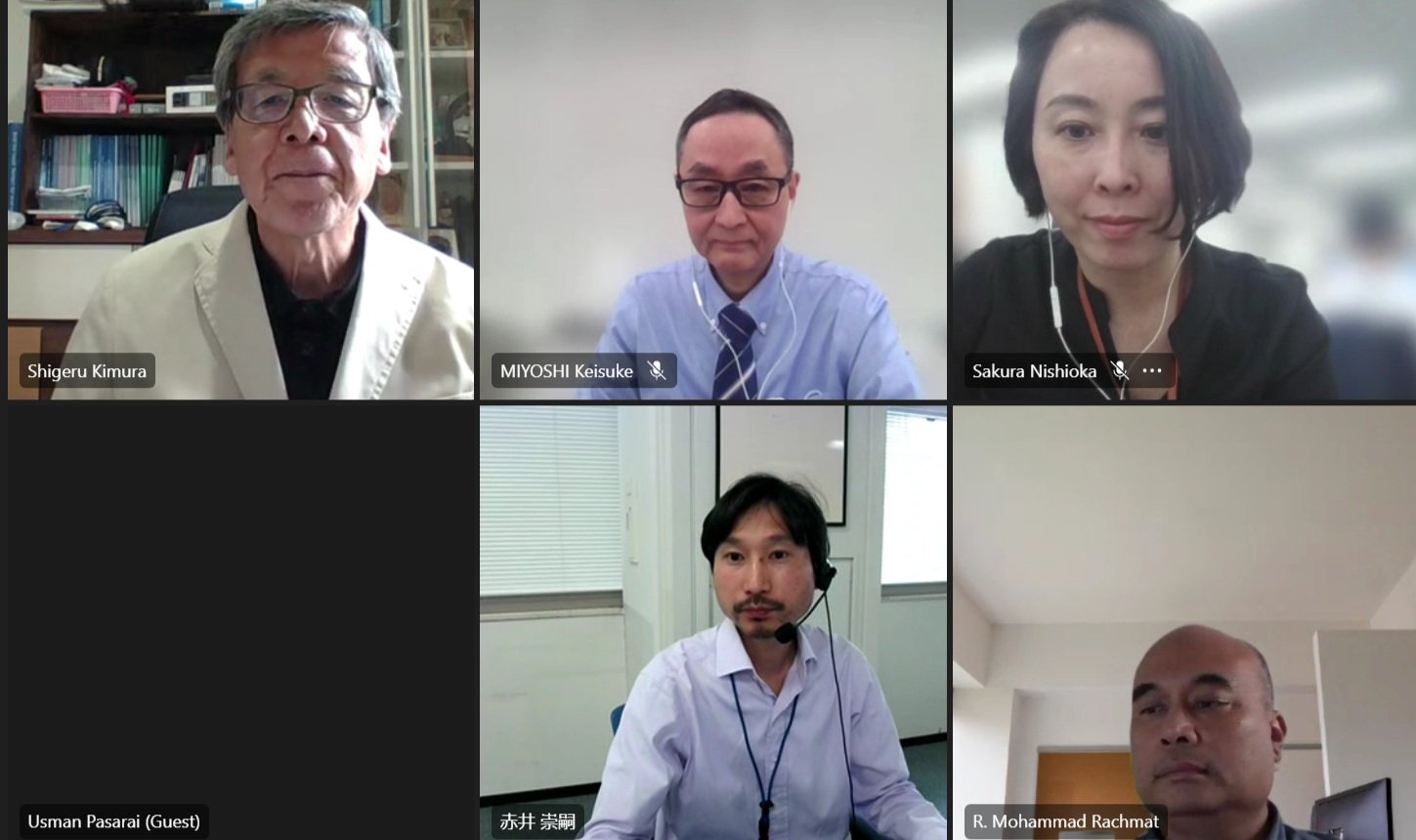JOGMEC gained insights from CCUS experts for CO2 EOR guideline
18 April 2023: A workshop on CO2 EOR guideline prepared by Japan Organization for Metals and Energy Security (JOGMEC), with support from Asia CCUS Network (ACN) is held on Tuesday, 18 April 2023. The CO2 EOR guideline contained a detailed procedure and guides on developing a CO2 EOR project, especially in the ASEAN region. This guideline is purposed as a reference for ASEAN countries to develop a detailed standard operational procedure (SOP) to develop CO2 EOR projects in the respective country. The workshop is attended by experts, both from technical and policy sides, who have been involved in CCUS projects in the ASEAN region.
Mr Shigeru Kimura, Special Advisor to the President on Energy Affairs, ERIA conveyed the opening remarks by underlining the importance of CO2 EOR project development in the ASEAN region to reduce GHG emission and tackle climate change. Mr Kimura also mentioned that the workshop has invited experts of CCUS from ASEAN region to give insights and comments regarding the CO2 EOR guideline by JOGMEC, with the hope that the guideline can be improved before the document can be shared as an open-source document.
The opening remarks then continued by Dr Sakura Nishioka, Global Coordination Division, Hydrogen and CCS Project Department, JOGMEC, where she introduced JOGMEC’s role on supporting the mining and energy security projects and the organization has a big concern on climate change. JOGMEC also has interest in hydrogen, ammonia, and as well CCUS technology implementation and has already supported numerous projects globally.
The speaker of the workshop, Dr Takashi Akai, Reservoir Engineer/Director, Subsurface Division, Hydrogen and CCS Project Department, JOGMEC presented the materials on the CO2EOR projects guideline for long-term sustainability of CO2 capture. Dr Akai presented the content of the guidelines in 3 parts: Introduction, Development plan and operation of CO2 EOR, and Quantification of GHG emission reduction with CO2 EOR. In the introduction part, he began by explaining the global trends on CO2EOR, where currently there has been a difference in views from different regions regarding CO2EOR technology. He emphasized that some International Institutions such as UNFCCC-COP, IPCC, and IEA do not deny the ability of CO2 EOR, as well as Southeast Asia and Middle East countries. On the contrary, EU countries seem to have negative perception on the importance of CO2 EOR. JOGMEC through this guideline wants to make a statement on the importance of CO2EOR and believe that the technology is an effective means of GHG emissions. He also explained that the guideline only bounded temporally from ‘Pre-injection period’ to ‘Project termination period’, and spatially bounded specifically on the EOR site only.
Dr Akai continued by diving deeper into the technicalities of the CO2 EOR guideline in the second part of his presentation. Dr Akai explained on Reservoir Characterization, where in this process the overall reservoir in the CO2 EOR project need to be assessed. Detailed assessment needs to be done by including geological characterization, process flow diagram of the facility, historical well information, and model simulation. Risk assessment for containment assurance also needs to be conducted complying the initial and operational containment assurance. In addition, identification of potential leakage, preparing well integrity assessment, develop remedial plan, and several cautions regarding natural and induced seismicity also need careful attention. Monitoring planning is also recommended within the guideline to determine production rate as well as potential leakage. The guideline also discussed regarding the project termination, including termination plan, periodic assurance of containment, requisites for termination, and post termination.
In the last part of the presentation, Dr Akai made a remark on how to quantify GHG emission reduction with CO2EOR, focusing only on CO2 and methane emissions. The guideline requires the quantification of 1) emissions associated with fuel and power consumption (Scope-1 and Scope-2 emissions), and 2) Methane leakage in an EOR site. During the energy transition, the guideline doesn’t require the quantification of Scope-3 emissions of produced oil. Lastly, Dr Akai explained the formula for the emission quantification, and the detailed flowchart for CO2 measurement in an EOR site including flow meter placement recommendations.
The workshop then followed with a discussion session, where the experts on CCUS gave comments regarding the guideline. Dr Usman Pasarai, Senior Researcher, National Research and Innovation Agency made a note on the quantification of GHG, where he asked on the method to quantify the emission associated with the scope 2 emission. Dr Akai then responded by explaining that there are two ways; using direct measurement and indirect measurement. Indirect measurement is cheaper as it does not require direct capture of information in the reservoir. Dr Usman then further asked whether the guideline also recommends the optimization of the storage and incremental oil within the simulation model. Dr Akai then emphasized that a specific optimization guideline is not provided since optimization process in a CO2 EOR project is case specific based on the reservoir characteristics.
Dr Gusti Sidemen, ERIA expert on CCS/CCUS also asked two issues on the administrative view. He conveyed the importance of experts’ comments to improve the guideline as the guideline will be an open-source document for the members from Asia CCUS network. The liability of the post closure period is also asked as this matter is out of the guideline’s scope. Dr Akai then enunciate that JOGMEC is in line with the first issue raised and JOGMEC is currently finalizing the English version. Dr Akai then explained that the post termination period is also within the scope of local government, hence the project developer will need to check with local policy makers to make sure the liability caused is manageable.
Dr Rachmat Sule from Institut Teknologi Bandung asked on the expectation of the guideline document, especially for Indonesia where SKK Migas will make a standard operational procedure (SOP) for Indonesia following the legislation of CCUS regulation in Indonesia. Dr Akai mentioned that this guideline can support the quantification of GHG emission in the project, and the guideline can be used as a good starting point for developing the SOP.
Further discussion was then directed to the publication of the CO2 EOR guideline, which will be available for public use. Dr Akai mentioned that JOGMEC will release the English version of the guideline which will be published in June or July. Mr Shigeru Kimura emphasized the importance of the guideline and requested JOGMEC to share the guideline, where ACN can support the distribution of the document. Later on, the English version of the CO2 EOR guideline by JOGMEC will be available on ACN website, where all members, supporting members, and everyone interested in the topic can access the document freely.
Mr Keisuke Miyoshi, Director General, Hydrogen and CCS Project Department, JOGMEC gave the closing remarks, and touched upon the main purpose of the guideline, where it purposes as to show JOGMEC’s standpoint towards the importance and usefulness of CCUS and CO2EOR technology during the era of Energy Transition. Mr Miyoshi then closed the remarks by enunciating the importance of the guideline and hope it can promote the development of CO2 EOR projects, especially in ASEAN countries.

